Around the world, analysts are developing new ways to track the economic impacts of COVID-19 in order to understand the enormous fallout, the gradual signs of recovery and how businesses are responding to new realities, constraints and opportunities.
Export Development Canada’s Deputy Chief Economist Stephen Tapp says, “EDC’s latest COVID survey corroborates other indicators for the month of May, thankfully suggesting the Canadian economy has turned the corner—tentatively emerging from the worst of the global pandemic, and taking the first steps on road to recovery.”
Many companies are pivoting to support the pandemic and are identifying new opportunities, both domestically and abroad. Businesses are also investing to build their online capabilities, and those that have done so, have helped to mitigate sales declines. Stores are reopening and overall business activities are slowly improving.
But significant challenges remain for a wide range of Canadian companies, who increasingly expect the period of adjusting to the COVID-19 shock to last longer—perhaps a year or more, especially for the hardest hit sectors, such as oil and gas, aerospace, autos, retail, tourism and personal services.
In April, EDC’s Research Panel conducted an online survey to collect timely insights on how COVID-19 was impacting Canadian exporters. In this followup survey conducted in May, we’ve added new questions to gain fresh insights from respondents about how they’re coping in these challenging times.
Here are our Top 10 findings:
1. It looks like we’ve hit bottom:
EDC survey responses suggest the Canadian economy likely hit bottom in April, and was starting to dig itself out of the massive COVID-19-induced hole in May.
Official data from Statistics Canada (released after our survey was collected), confirms that Canadian employment and exports grew modestly in May, after large declines in March and April.
Overall, respondents were still clearly struggling to deal with COVID-19’s impacts in May, but thankfully the negative impacts started falling, while the positives are growing, for both domestic and export sales.
Domestic sales

Export sales
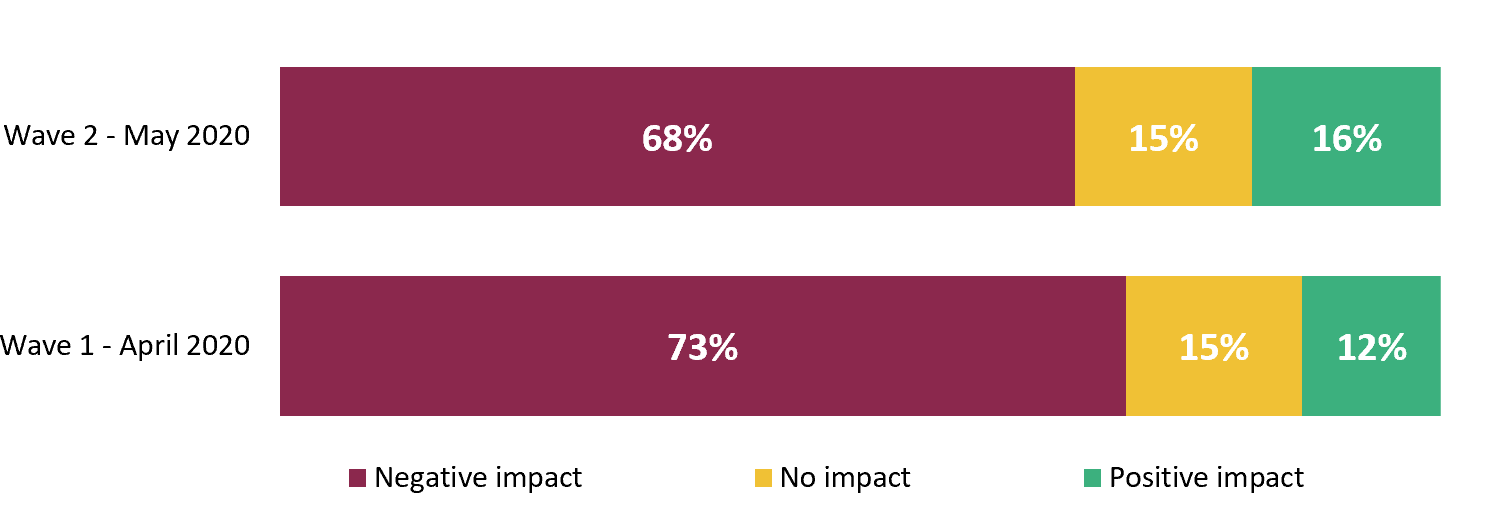
2. Slow reopening underway:
As provincial governments began easing COVID-19 containment measures in May, Canadian businesses started getting back to work. Of the 54% of respondents who had closed their physical store locations:
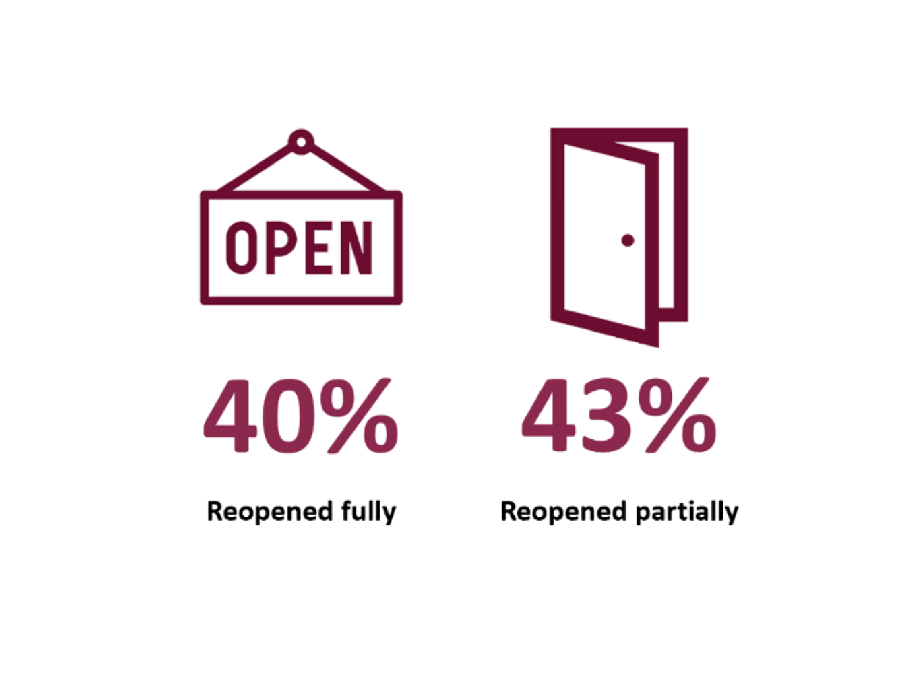
3. Companies are investing in online capabilities:
With many storefronts shuttered and sales shifting online, companies increased their online sales capabilities in May.
Almost one-third of respondents say they’ve increased their online presence because of COVID-19, and 16% say they’ve developed online capabilities essentially from scratch, which didn’t exist before.
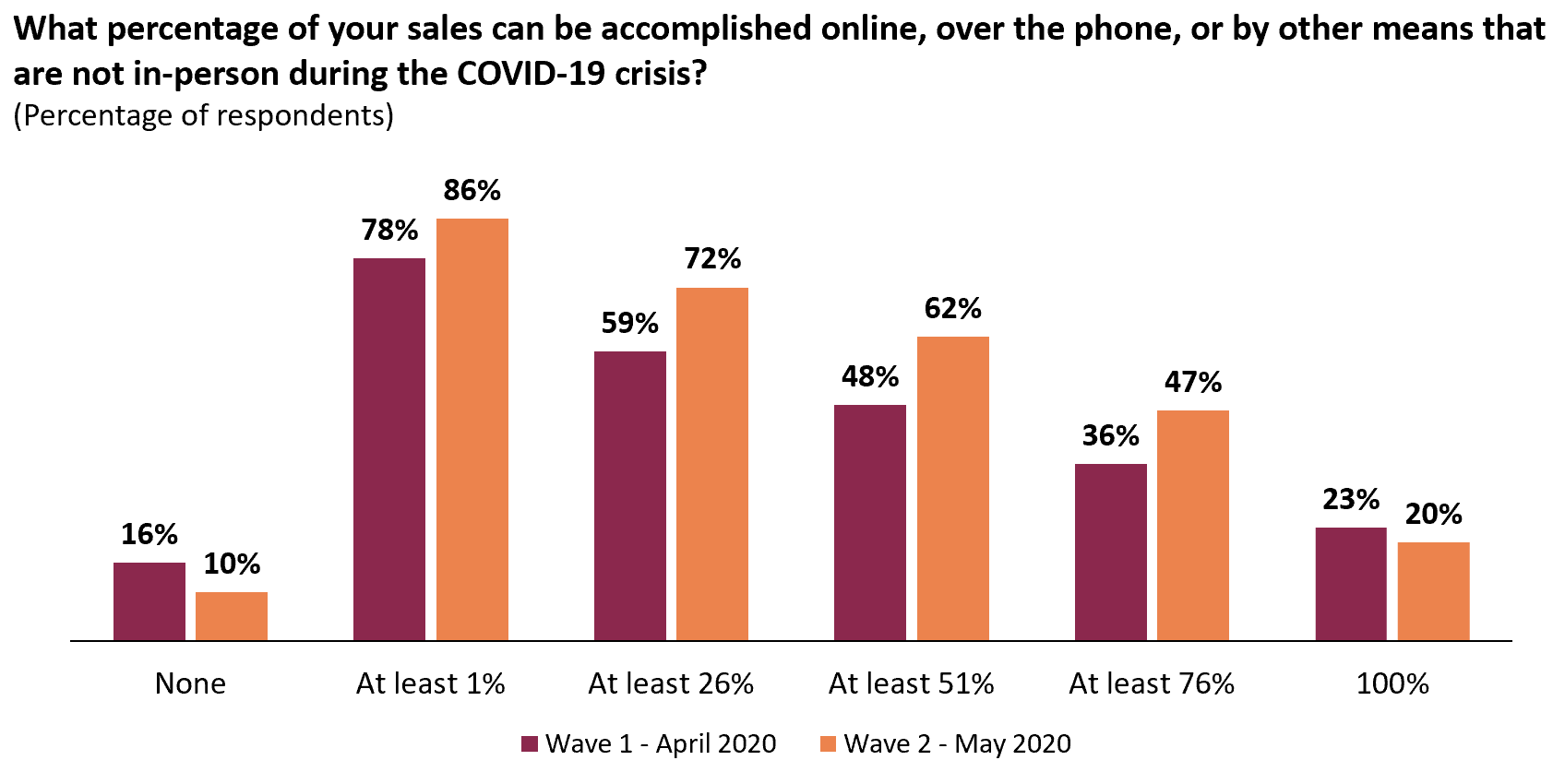
4. Better online capabilities have moderated sales declines:
We separated responses into two groups of companies based on their online capabilities:
a) those who could only perform up to half of their sales online; and
b) those that could perform more than half of their sales online.
We found that the second group, those companies with better online capabilities, reported much smaller sales declines.

5. Canadian companies are identifying new opportunities, both in domestic and international markets.
One-third say COVID-19 has provided their business with new domestic opportunities, and 22% new export opportunities.
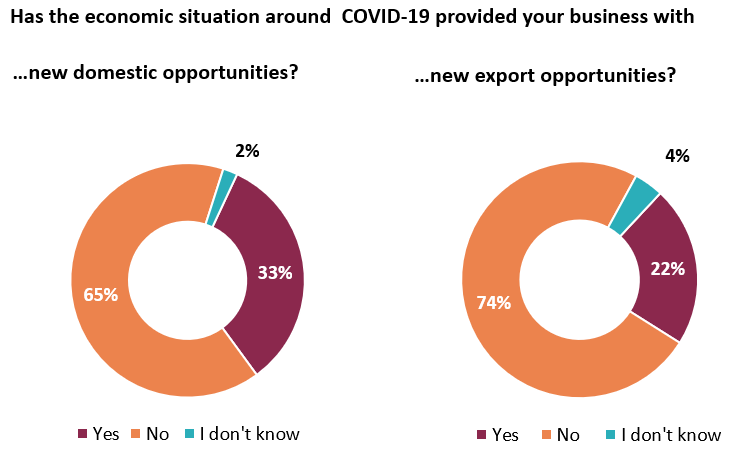
6. More businesses are pivoting to new activities to support the pandemic.
The share of respondents who said they are pivoting their production rose from 16% to 20%.
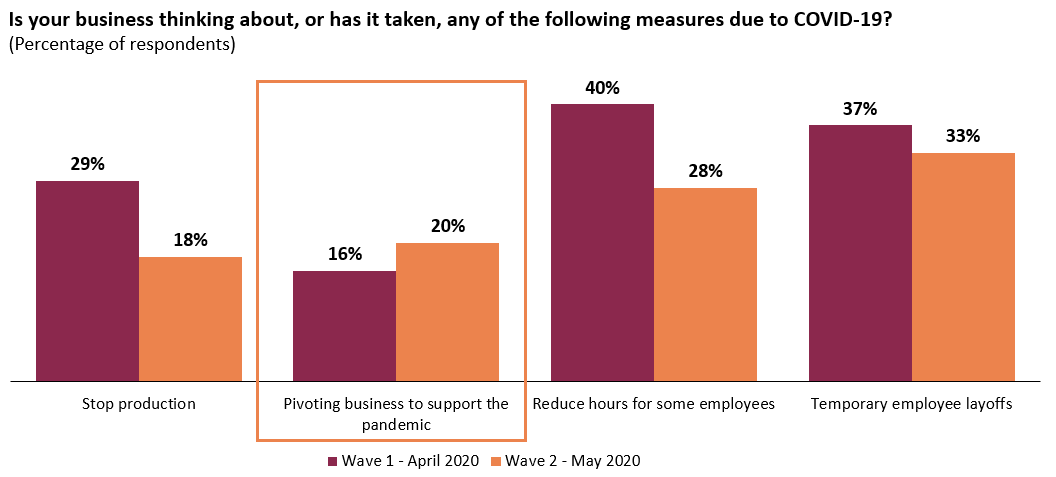
7. Companies are rethinking their supply chains.
Almost one-quarter of respondents are actively considering new international suppliers for inputs, while 21% are considering new domestic suppliers.
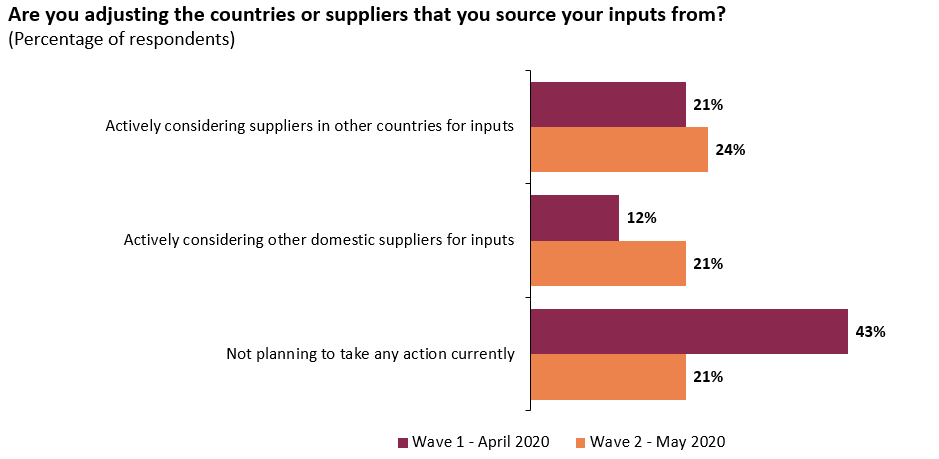
8. The vast majority (96%) of respondents reached out for government support.
The most frequently used programs include: Canada Emergency Wage Subsidy (CEWS, 33% of respondents); Canada Emergency Business Account (CEBA, 18%); and Canada Emergency Response Benefit (CERB, 14%)

9. It’s still challenging times:
The top challenge for Canadian companies is business recovery, and internationally the main challenge has shifted from cancelled contracts to travel restrictions.
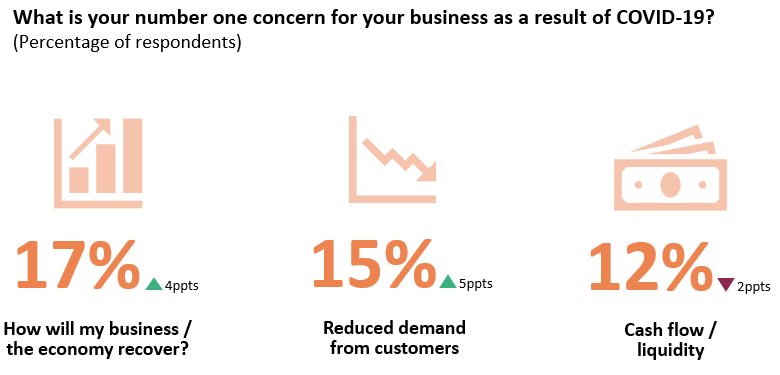
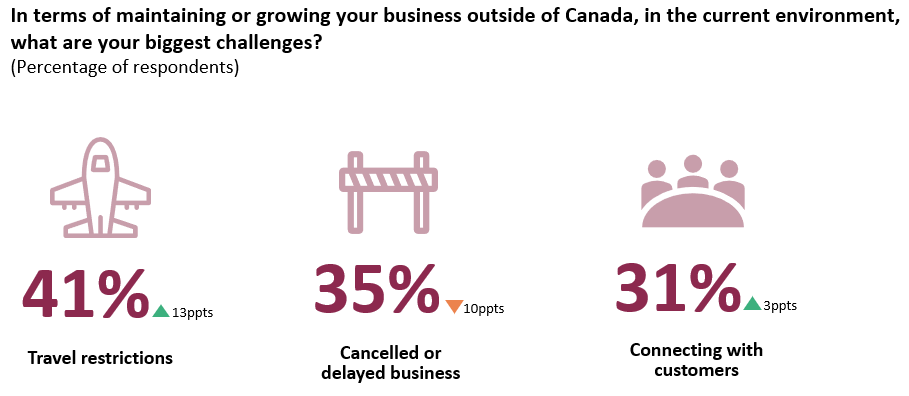
10. COVID-19’s impacts are now expected to last longer.
In April, the most common response (33%) was for impacts to last from four to six months. But just one month later in the May survey results, the most common response (38%) shifted dramatically to more than one year. We saw a slightly larger shift for export sales.
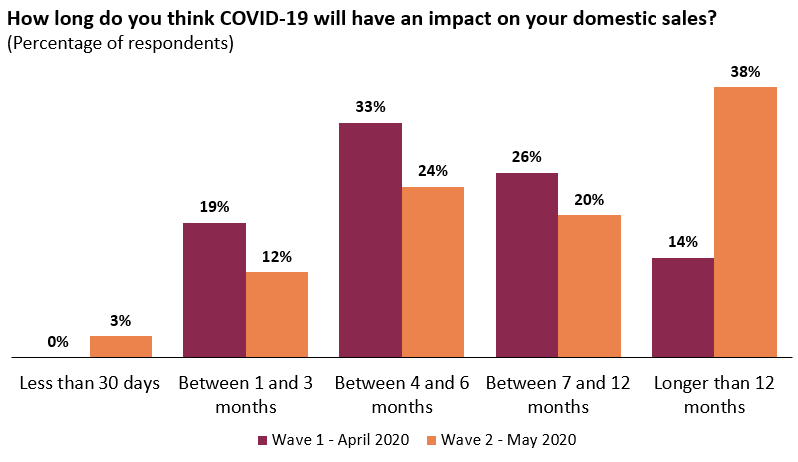
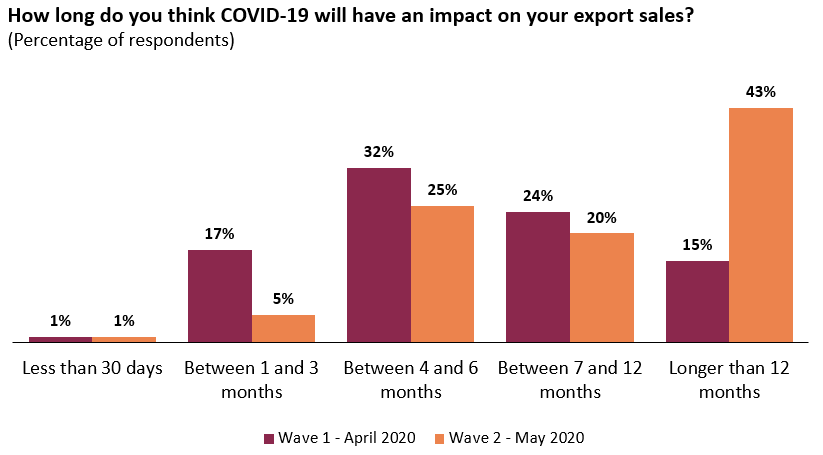
The economy is still clearly in the early stages of adjusting to a major disruption—one which Canadian businesses now expect they’ll be adjusting to perhaps another year or longer. There are some positive signs, however, that things are starting to improve. The EDC Research Panel will conduct a third wave of this survey in a few months, and we hope to report new insights from an economy that’s farther along the road to recovery.
Additional survey details
This was an online survey by EDC’s Research Panel—a self-selected sample of knowledgeable decision-makers about their company’s activities. The businesses surveyed reflect the overall Canadian business population by firm size, region and sector. Given our sample size, the survey’s margin of error is larger than usual: +/- 9.1% with a 95% confidence interval.
EDC’s first survey was conducted from April 9 to April 17, 2020. Sample size 114.
EDC’s second survey was conducted from May 20 to June 2, 2020. Sample size 112.
During that time, various COVID-19 containment measures were in place in Canada, and many countries abroad, including: restrictions on non-essential business operations; shelter-in-place advisories; school closures; and travel restrictions. Furthermore, some Canadian provinces and other countries were starting to relax containment measures, allowing some businesses to reopen with restrictions and in a phased approach, and some government program aids were being expanded and extended.
Authors

Andrew DiCapua
Senior associate, Economics
Export Development Canada

Jennifer Topping
Senior Customer Experience & Research Manager
Export Development Canada







